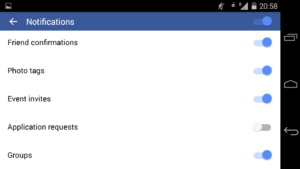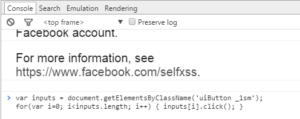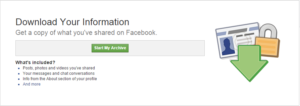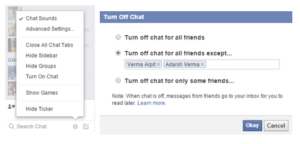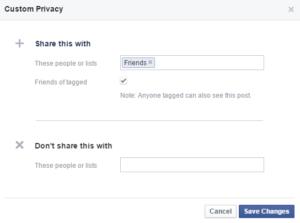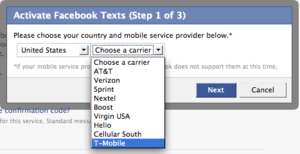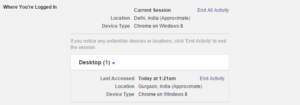Modern-age SSDs are a great option over the traditional
rotating hard drives that have been used as the primary means of storage since the last 50-60 years. The magnetic tape based storage option have found themselves short-handed when it comes to matching speed with that of a computer processor, they still lag behind when it comes to offering reduced latency while accessing the data.
On the other hand, SSD (Solid State Drive) has made a considerable attempt to compete with the latency offered by processors, yet they fall behind, but they are an advantage over the circular rotating disks. The conventional HDDs are rotating magnetic disks used to store data like OS files, movies, music, games, etc. They are a cheap option but their biggest disadvantage is that they’re slow.
Talking about their origin, their ancestors have been there since the time when we used to work on vacuum tube-based computers. Charged Capacitor Read-Only Storage (CCROS) and Magnetic Core Memory were two similar technologies in the 1950s.
What is SSD?
An SSD (solid-state drive or solid-state disk) is a nonvolatile storage device that stores persistent data on solid-state flash memory.
What is Inside SSD?
SSD (solid state drives) is an integrated circuit under the hood which is used to store data. Their electronic interface is compatible with the block input/output interface used by HDD. You can just swap your old hard drive with a new SSD in a matter of a few minutes, provided, you are skilled enough to successfully open your computer hardware. And with no moving parts, they are way faster and strong enough to take shocks. They won’t mind even if you are careless enough to drop them from your table.
Memory:
Early versions of SSDs were based on DRAM volatile memory which furnished faster access and low latency but the only problem was that the data couldn’t be retained in the memory in the absence of power supply. It was in 2009 when SSDs based on NAND flash non-volatile memory were introduced which propelled their widespread adoption. Although, they are slower than the ones based on DRAM but they can still outrun conventional HDDs. And the biggest advantage is that the data remains intact even if you cut off the power supply.
NAND memory is made up of floating gate transistor cells which retain their charge states in the absence of power supply. Floating gate contains the electrons and the charged state is represented by binary bit 0 and discharged state by 1. Binary bit 0 represents data is stored in the NAND flash. The cells are arranged in a grid fashion and the grid is known as a block. An individual row in a block is called Page with sizes 2K, 4K, 8K, or 16K. Each block contains 128-256 pages, so the approximate size of the block varies between 256KB to 4MB.
NAND Flash is either Single Level Cell (SLC) which stores only one binary bit in one floating gate transistor and Multi-Level Cell (MLC) which stores two bits. Clearly, the latter one has more storage capacity but it comes at a price, they wear out faster. MLC type NAND flash memories are cheaper than SLC and are used in industry grade solid state drives (after making some modifications) which require more storage capacity but it degrades more quickly.
Controller:
It’s responsible for how data gets stored in a flash memory. It is designed for various requirements and could be loosely clubbed into two groups, one for low duty-cycle environments like flash drives, SD cards, camera, etc. in which constant read/write operations are not required. The other environment is high duty-cycle which requires constant read/write operations to be performed on the memory, like Solid State Drives.
Flash Controller acts as the middle man between the storage media and the computer. It is an embedded processor that is responsible for the performance of an SSD. Each time a computer wants to access the flash memory to perform a read/write operation, the flash controller comes into action.
The controller also manages the flash memory cells. Efficient handling of the storage cells is must as SSDs support a limited number of read/write cycles, about 10 thousand, and it would be wise enough to deploy something which makes sure that all the cells used equally in order to preserve the lifespan of the flash media, otherwise, some cells will become inoperable and some will be left unused throughout the lifetime of the SSD. Manufacturers use a technique known as wear-leveling to make sure that the degradation of the flash memory happens uniformly over time by programming the controller to utilize all the cells efficiently.
Another task the controller is assigned is known as Garbage Collection. In this process, when the write operation has been performed on every memory block for one time, the controller checks the initial blocks for the pages that will be required by the computer. It then copies those pages to a new block and leaves the existing block (known as a Stale block) to be erased and filled with new data.
The controller manages other important operations like introducing error-correcting code (ECC) which is the bit sequence of data stored and helps in
data recovery in case it gets corrupted. Controller also maps bad sectors in the flash memory which are caused due damage occurred to the SSD. These can be logical bad sectors which can be repaired or physical bad sectors which represent permanently damaged parts of the flash memory and cannot be repaired. Controller uses the ECC to perform Memory Scrubbing operation which involves scan and repair of corrupt data in different locations of the memory.
Cache:
A small amount of DRAM volatile memory is used as a cache to store wear leveling data and to maintain a block placement directory. It improves the performance of the SSD but at the same time it increases the power consumption.
How SSDs work?

If we talk at the basic level, inside a solid state drive, transistors are in a sequential fashion. Initially, all the transistors are set to value 1 (not charged). When saving operation begins, the current starts flowing through the chain of transistors and the value for some transistors becomes 0 as data is saved in them. In the grid, each intersection of the rows and columns is called cell which comprises of two transistors, one as the control gate and the other one as floating gate. The current flows into the floating gate and the electrons flow into the control gate. So, a net positive charge is created which interrupts a current flow. Similarly, we can have a unique pattern of 1s and 0s by applying precise voltage values.
Difference between SSD and HDD:
Advantage of SSD over HDD:
Fast Booting Time: Solid State Drives can tap their back over the speediness they offer when there is a need for lightning fast OS boot-up. A typical consumer-grade SSD can boot your Windows OS in almost half the time it takes for spinning disk.
Quick Read/Write: Around 500 megabytes per second for an average SSD in comparison to 150 megabytes per second by a hard drive. SSDs can be beneficial to you if you’re a graphic designer who uses heavy video editing software or some hard-core gamer on a spy mission.
Low power consumption: These flash storage devices are designed to use less in comparison to their traditional alternatives. So, your laptop’s battery will last longer and you’ll be able to save some cash on your electricity bill.
Reduced noise pollution: Rotating hard drives are known to make sounds which are sometimes annoying when you are in the middle of something that requires a lot of concentration power. SSDs can make a great difference on that note, you won’t even notice these silence loving drives in action.
Shape and Size: Their integrated circuit can be fitted in a compact casing, but they’re designed to fit in the pants of the conventional HDDs. They can be installed right out of the box in the same slot where your old hard drive sits.
Disadvantages of SSD over HDD:
Pocket burning price: Over the years, there has been a drop in the price of SSDs, but still, their magnetic disk grandpas are way cheaper. The most probable reason is that they’re not much popular like the hard drives and the technology needs to become more mature. Maybe in the coming years, we could see NAND flash replaced by some other memory type providing more affordable solid state drives in the market.
Data loss due to power-cut: Although, they’re more reliable than their spinning counterparts. Their sensitive nature is reflected when there is a power cut. Aborted write operations and even complete loss of data may be observed in the case of power interruption.
Limited life span: The biggest disadvantage of having an SSD is that it loses its writing abilities over time. This is because it is not possible to change a single bit value in an SSD. For that purpose, a large block of data needs to be erased and rewritten. When an erase cycle is performed for a cell, some charge is left in it. This charge increases the resistance of the cell and eventually, no current is able to pass through it. Thus, it becomes of no use.
I told you about wear leveling technique which is implemented to address this issue. But that’s not a full-proof solution, it only slows down the degradation process by making the SSD wear out evenly. It involves complex algorithms which are difficult to test exhaustively and may lead to the loss of data caused due to firmware bugs. One important thing to be noted is that this problem doesn’t affect the reading abilities of the SSD as no charge value is altered during a read operation.
One game-changing approach used by the manufacturers is a hybrid drive which is based on a method known as SSD Caching, not to be confused with cache memory inside SSD. In this, frequently used data and applications are copied to the SSD which acts as the cache memory. The HDD acts as the main storage device which keeps all the data. So, we have a lightning fast storage media along with gigs of space to store our music, movies, and games.
These non-mechanical drives may have the advantage of speediness over the spinning hard drives but the old horses are still cheaper these modern sports cars. New technologies like
HAMR (Heat Assisted Magnetic Recording) are being developed for hard drives which will help them in retaining their throne in the market. Hard Drives have done a tremendous job in revolutionizing the computing world. With the pace of time and increased demand for high-speed storage media, SSDs pose themselves a potential candidate for the future of storage. Recently, Samsung has launched
PM1633a 15TB SSD which could be seen as the initial steps to the bright future of these solid state media.












 If we talk at the basic level, inside a solid state drive, transistors are in a sequential fashion. Initially, all the transistors are set to value 1 (not charged). When saving operation begins, the current starts flowing through the chain of transistors and the value for some transistors becomes 0 as data is saved in them. In the grid, each intersection of the rows and columns is called cell which comprises of two transistors, one as the control gate and the other one as floating gate. The current flows into the floating gate and the electrons flow into the control gate. So, a net positive charge is created which interrupts a current flow. Similarly, we can have a unique pattern of 1s and 0s by applying precise voltage values.
If we talk at the basic level, inside a solid state drive, transistors are in a sequential fashion. Initially, all the transistors are set to value 1 (not charged). When saving operation begins, the current starts flowing through the chain of transistors and the value for some transistors becomes 0 as data is saved in them. In the grid, each intersection of the rows and columns is called cell which comprises of two transistors, one as the control gate and the other one as floating gate. The current flows into the floating gate and the electrons flow into the control gate. So, a net positive charge is created which interrupts a current flow. Similarly, we can have a unique pattern of 1s and 0s by applying precise voltage values.